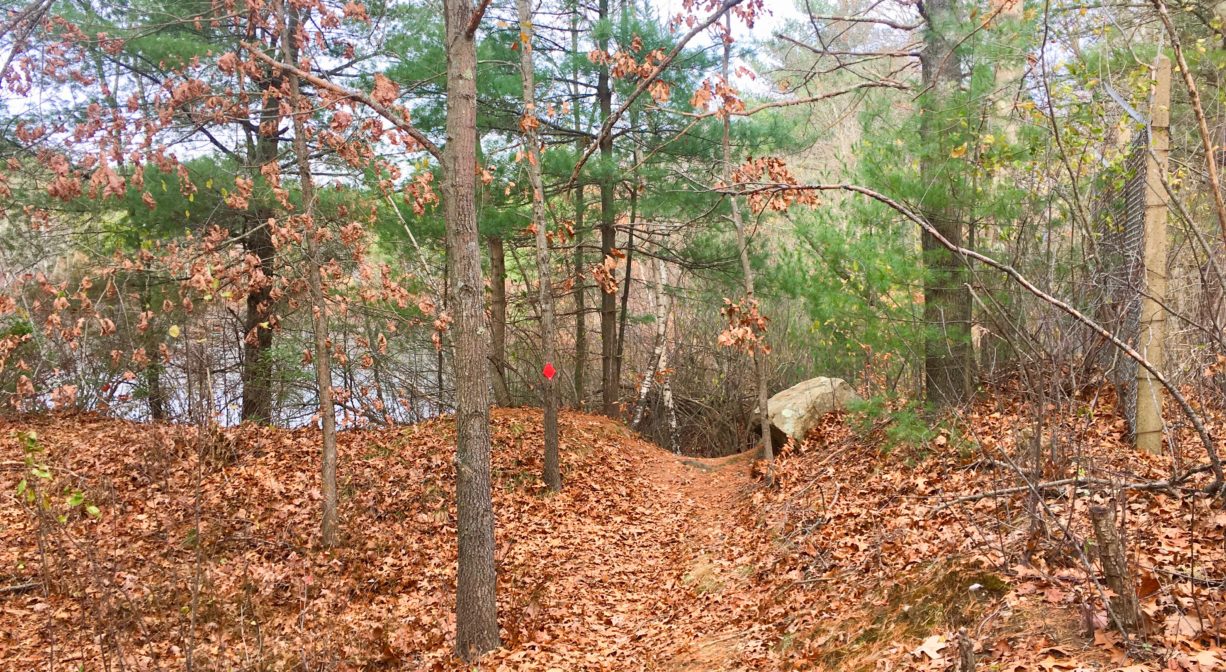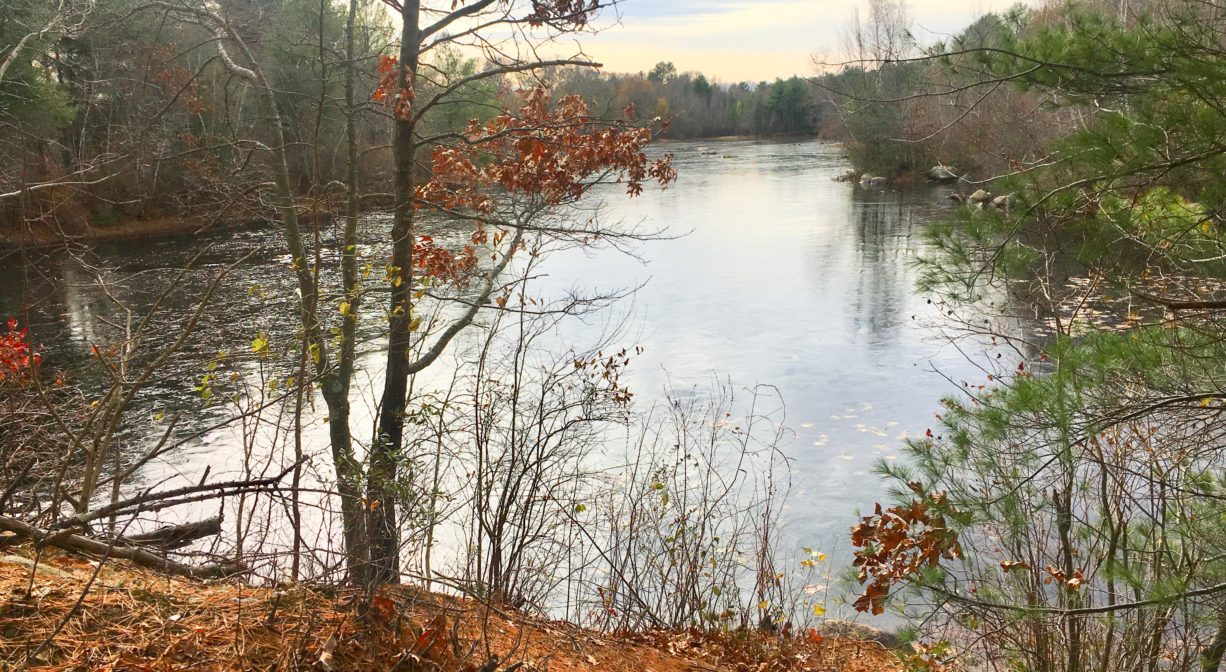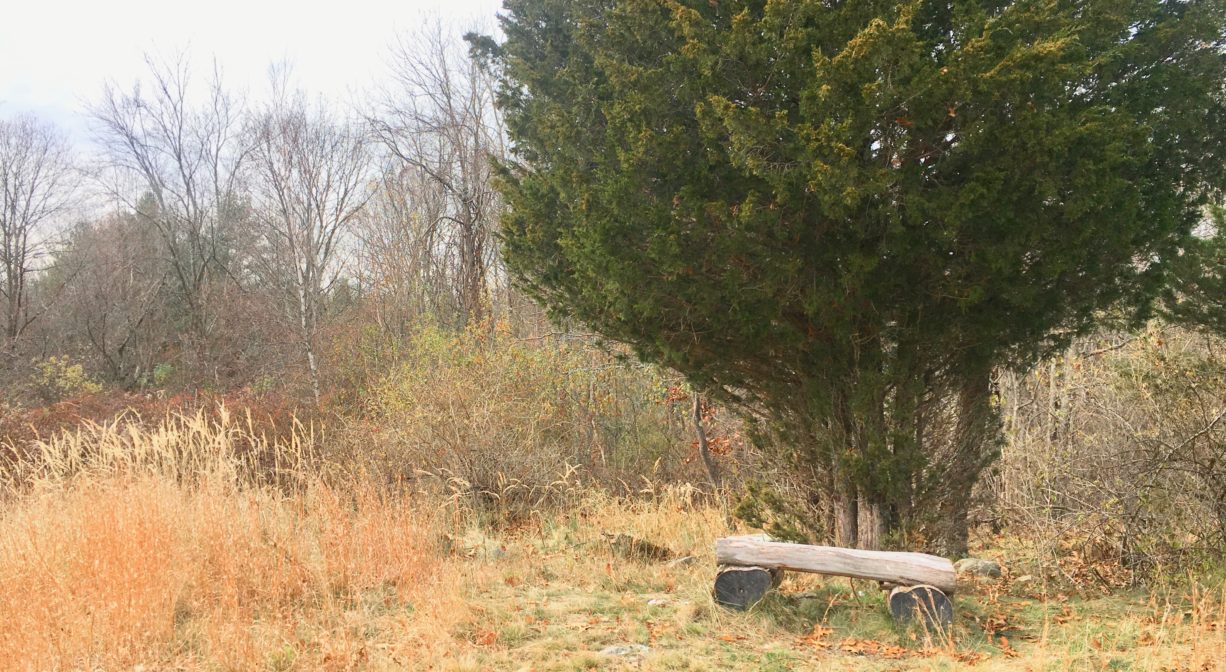Thompson Pond & Twin Ponds Trail System, 104-194 Spruce St, Abington, MA 02351, USA
Town of Abington: 781-982-2100
Owned By: Town of Abington
The Thompson Pond Trail in Abington extends for about two miles through meadow and forest. It is located on the site of the former South Weymouth Naval Air Station and shares a parking area with the Twin Ponds Trail.
Features
The land through which the Thompson Pond Trail extends was part of the Naval Air Station South (NAS) Weymouth for many years. The Naval Air Station was commissioned on this site in March 1942, however construction work began in the late fall of 1941, a few months before the United States entered World War II. Originally the base operated blimp combat patrols. During the Battle of the Atlantic, blimps based here helped protect U.S. ships from German submarines.
The base was downgraded to a Naval Air Facility after WWII. The blimp hangars were repurposed as storage for war surplus naval aircraft. In 1949, the base was redesigned as a Naval Auxiliary Landing Field. In 1950, after the closure of NAS Squantum in Quincy, South Weymouth became the new home of the Navy and Marine Air Reserve training program. Between 1951 and 1953, three new runways were constructed, and other improvements were made to support the reserves. One blimp hangar was demolished at this time. The other remained in place until November 1966.
In December 1953 the base was recommissioned as a Naval Air Station. It remained a reserve training base throughout the Cold War era, and also hosted the Naval Air Development Unit (NADU), a secretive research & development command. NADU aircraft provided flight testing support for military research.
After the end of the Cold War in 1991, NAS South Weymouth was among many military bases nationwide that were selected for closure. The last aircraft took off from the base in September 1996, and the official closure took place on September 30, 1997.
Looking north from the trailhead, the open field before you seems vast. It’s not hard to imagine the runways that existed here in decades past. The manmade Thompson Pond was created to help restore the natural wetlands that once existed on this site.
This land is within the region of the Massachusett (or Massachuseuk) tribe. According to Martha Campbell’s Remembering Old Abington, the original town of Abington included today’s Abington and Rockland as well as most of Whitman. in the 1660s, European settlers from Weymouth began establishing homesteads within the town. While the settlers came from Massachusetts Bay Colony, the land was part of Plymouth Colony. All of the 18 original land grants were along the Satucket Path, a trail established by Native Americans that extended from Wessagusset Beach in North Weymouth to Robbins Pond in East Bridgewater.
Campbell also explains how the Native American name for the town was Manamooskeagin, translated from the Algonquin as “great green place of shaking grass.” The Abington town seal incorporates its Algonquian name.
To learn more about local Native American tribes, we encourage you to interact with their members. The Mattakeeset band of the Massachusett, and the Massachusett tribe at Ponkapoag, both share information on their websites.
Trail Description
The trail was created by the Wildlands Trust. It begins by heading north through the meadow. You can follow a wide road or choose a narrower route through the grass. Red blazes lead the way. The Twin Ponds Trail veers off to the right. To remain on the Thompson Pond Trail, keep left. After a sharp turn west (left), the trail crosses the West Branch of French’s Stream, and continues past Thompson Pond. Through both meadow and forest, it completes a loop and eventually returns to a spot near the pond. The total trail distance is 1.9 miles.
Most of the trail is flat, but there are sections near the pond with a relatively steep slope. To extend your walk, consider the Rockland Town Forest. From the parking area, walk across Spruce Street to the left. You’ll find the trailhead a few steps down the road.
Habitats and Wildlife
The forest here is comprised primarily of pine, oak and maple, with plenty of greenbrier. Some species known to exist on this property are American kestrel (a small hawk), great blue heron, wood duck, spotted sandpiper, river otter, painted turtle, white-tailed deer, coyote, and eastern meadowlark. At dusk, listen for the “Who cooks for you? Who cooks for you-all?” call of the barred owl.
ATV use is prohibited. Please be mindful of poison ivy.
The West Branch of French’s Stream flows through this property. Farther south, in the Rockland Town Forest, if flows together with the East Branch of French’s Stream. The stream continues south, and then southeast, into Hanover. On the outskirts of Forge Pond Park in Hanover, it flows into the Drinkwater River.
The Drinkwater River continues to flow southeast of Forge Pond, into Factory Pond. From there, the waterway turns east and is known as the Indian Head River. It joins Herring Brook in Pembroke and Hanover to form the North River, which flows 12 miles through Hanover, Pembroke, Norwell, Marshfield, and Scituate, to the Atlantic Ocean.
Historic Site: No
Park: No
Beach: No
Boat Launch: No
Lifeguards: No
Hours: Dawn to Dusk
Parking: Limited on-site parking on Spruce Street in Rockland.
Cost: Free
Trail Difficulty: Easy, Medium
Facilities:
Benches. Information kiosk near the parking area. Geocache location.
Dogs: Dogs must remain on leash. Scoop the poop!
Boat Ramp: No
ADA Access: No
Scenic Views: Yes
Waterbody/Watershed: French's Stream (North River watershed)




















